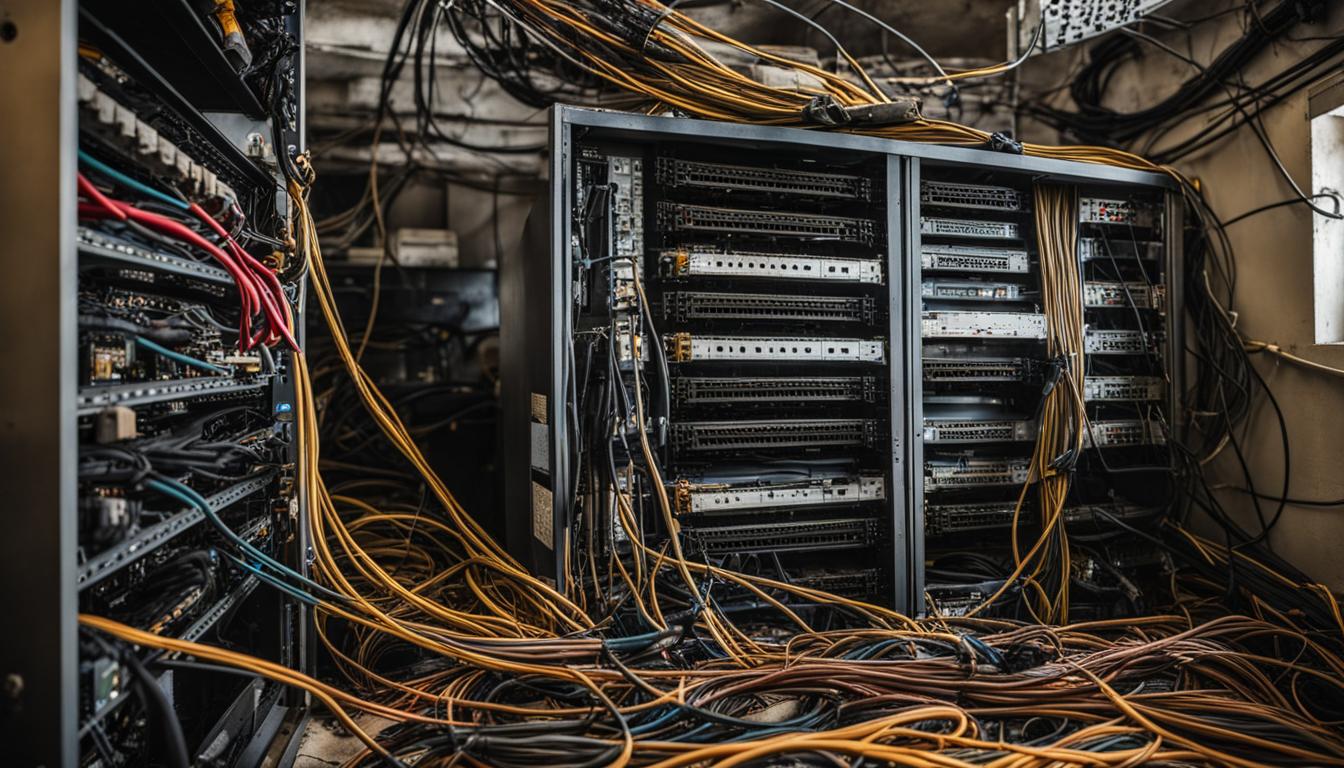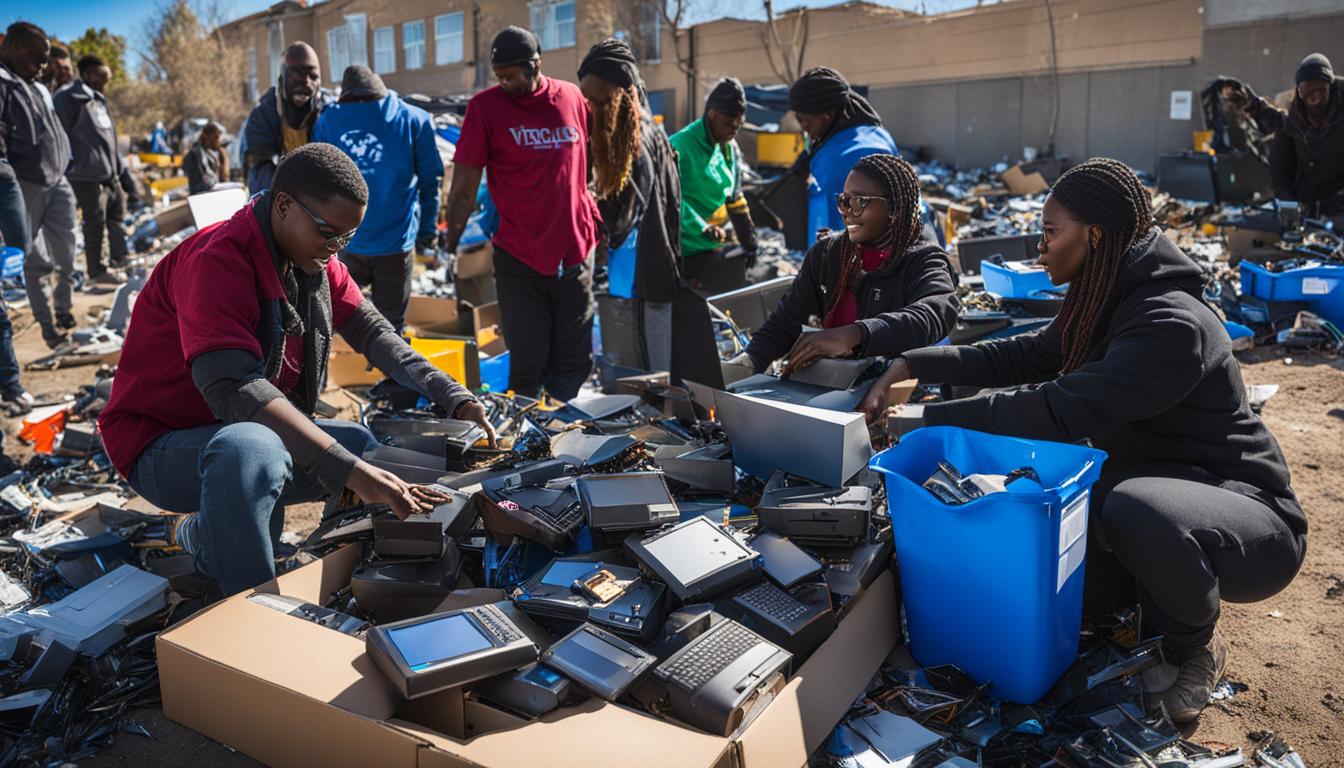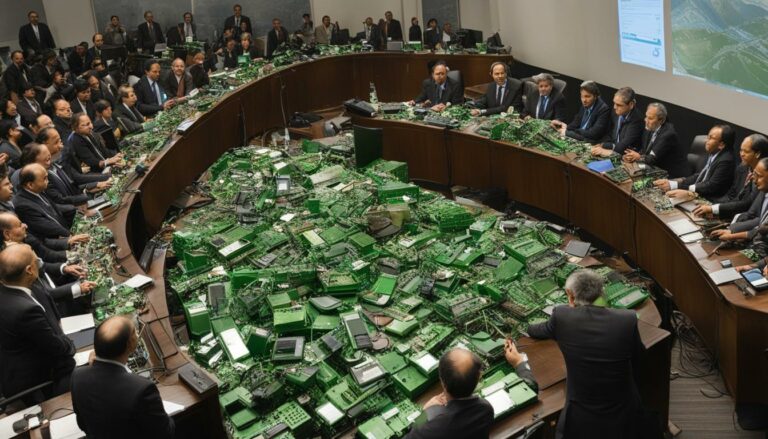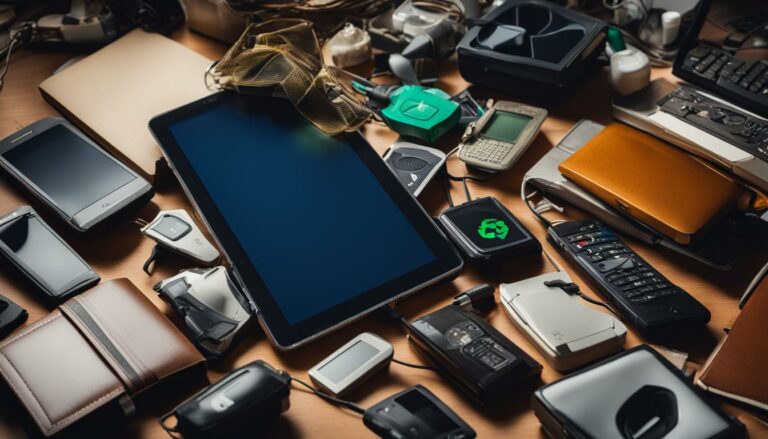Corporate IT Recycling Drives: Steps for Success
Corporate IT recycling is an essential step for companies to achieve sustainability and uphold their ecological responsibility. Improper disposal of IT assets can lead to data breaches and pose a significant risk to sensitive information. To successfully prepare a computer for disposal, there are important steps to follow, including creating a backup, cleaning the hard drive, wiping external drives, deleting browsing history, uninstalling programs, encrypting files, and destroying drives. It is also crucial to consider other computer disposal options such as recycling, donating, and trading. By following these steps, companies can ensure the secure disposal of their IT equipment while protecting sensitive data and contributing to a greener environment.
Key Takeaways
- Corporate IT recycling is crucial for sustainability and ecological responsibility.
- Improper disposal of IT assets can lead to data breaches and risk sensitive information.
- Steps to prepare a computer for disposal include creating a backup, cleaning the hard drive, wiping external drives, deleting browsing history, uninstalling programs, encrypting files, and destroying drives.
- Consider recycling, donating, or trading as alternative computer disposal options.
- Secure disposal of IT equipment protects sensitive data and contributes to a greener environment.
How to Prepare a Computer for Disposal?
When it comes to disposing of a computer, proper data destruction and secure removal of sensitive information are paramount. To ensure a safe and responsible process, follow these essential steps:
- Create a backup: Before wiping your computer clean, it’s crucial to create a backup of important files, ensuring nothing is lost during the disposal process.
- Clean the hard drive: Use data shredding software to thoroughly clean the hard drive. This software ensures that all data is permanently erased, making it virtually impossible to recover any sensitive information.
- Wipe external drives: If you have any external drives connected to your computer, be sure to wipe them as well. This will prevent any potential data breaches as a result of overlooked storage devices.
- Delete browsing history: Clear your browsing history and cookies to remove any traces of your online activities.
- Uninstall programs: Remove all unnecessary programs and software from your computer to ensure a clean slate for the next user.
- Encrypt files: For an added layer of security, consider encrypting your files before disposal. This will make it even more difficult for unauthorized individuals to access any sensitive data.
- Physically destroy drives: In cases where extreme caution is required, physically destroying the hard drives may be necessary. This ensures that all data is completely irretrievable.
It’s important to note that the appropriate method of data destruction may vary depending on the type of hard drive and operating system you have. Research and choose the best approach for your specific equipment to guarantee a secure disposal.
Setting Workplace Recycling Goals
Setting workplace recycling goals is crucial for businesses aiming to reduce waste and improve sustainability. By establishing specific, measurable, achievable, realistic, and time-bound (SMART) objectives, companies can actively work towards creating a more environmentally responsible workplace. These goals can focus on various aspects of recycling, including diverting waste from landfills, decreasing contamination levels, promoting waste avoidance strategies, and lessening the consumption of single-use packaging.
One of the primary goals of workplace recycling is diverting waste from landfills. This can be achieved by implementing recycling programs that encourage employees to separate recyclable materials from general waste. By ensuring the proper disposal of items such as paper, plastic, glass, and metal, companies can significantly reduce their environmental footprint and conserve valuable resources.
Another important aspect of workplace recycling goals is the aim to decrease contamination in waste streams. Contamination occurs when non-recyclable materials are mistakenly added to recycling bins, rendering them unsuitable for recycling. To address this issue, companies can educate employees about proper recycling practices, provide clear signage and labeling for recycling bins, and regularly monitor and audit the waste streams to identify and address sources of contamination.
Implementing waste avoidance strategies is another effective way to achieve workplace recycling goals. By encouraging employees to minimize the use of disposable items and seek reusable alternatives, companies can significantly reduce the amount of waste generated in the workplace. This can involve promoting the use of durable drinkware, encouraging digital rather than paper-based communications, and providing reusable containers for food and beverages.
Lastly, workplace recycling goals should aim to lessen the consumption of single-use packaging. Companies can explore sustainable alternatives, such as implementing a BYOB (Bring Your Own Bag) policy to reduce the use of plastic bags, opting for bulk purchasing to minimize packaging waste, and encouraging suppliers to use eco-friendly packaging options. By actively working towards reducing single-use packaging, companies can contribute to a more sustainable and environmentally friendly future.
Table: Workplace Recycling Goals
| Goal | Description |
|---|---|
| Diversion from Landfill | Implement recycling programs to divert waste from landfills and encourage employees to separate recyclable materials. |
| Decrease Contamination | Educate employees about proper recycling practices, provide clear signage for recycling bins, and conduct regular audits to reduce contamination levels. |
| Waste Avoidance | Promote the use of reusable alternatives and minimize the consumption of disposable items in the workplace. |
| Lessen Consumption of Single-use Packaging | Explore sustainable packaging alternatives, encourage suppliers to use eco-friendly options, and implement measures to reduce the use of single-use packaging. |
Reporting on Recycling Goals
Once workplace recycling goals have been set and achieved, it is crucial for companies to report on their progress and share their successes with others. External reporting on recycling goals not only helps communicate the company’s commitment to sustainability but also encourages and inspires others to follow suit. By showcasing their efforts and achievements, companies can contribute to a wider movement towards a greener and more sustainable future.
One key aspect of reporting on recycling goals is to highlight the waste diversion rates. This metric illustrates the amount of waste that has been redirected from landfills through recycling efforts. By quantifying this value, companies can demonstrate the positive impact they are making in reducing environmental harm.
Another important factor to report on is the reduction of contamination in waste streams. By tracking and documenting the efforts to decrease contamination levels, companies can showcase their commitment to responsible waste management and the implementation of effective recycling practices.
Additionally, reporting on waste avoidance strategies is essential for companies aiming to minimize the consumption of single-use packaging. By outlining the measures taken to reduce waste generation and promoting the use of reusable alternatives, companies can contribute to the overall goal of creating a zero waste office.
The Importance of External Reporting
External reporting on recycling goals helps communicate the company’s commitment to sustainability and encourages others to follow suit.
External reporting is vital as it allows companies to share their achievements with stakeholders, including customers, investors, and the wider public. It demonstrates transparency and accountability, while also inspiring others to adopt similar practices. By taking a lead in reporting on recycling goals, companies contribute to a collective effort in creating a more sustainable future for all.
Regular reporting and communication about recycling goals are essential to maintain momentum and ensure an ongoing commitment to sustainability. By consistently sharing progress updates, companies can reinforce their dedication to environmental responsibility and inspire others to take action. Together, these efforts help create a culture of sustainability and contribute to a greener world.
| Waste Diversion Rates | Contamination Reduction | Waste Avoidance Strategies |
|---|---|---|
| Quantify the amount of waste redirected from landfills through recycling efforts. | Track and document efforts to decrease contamination levels in waste streams. | Outline measures taken to reduce waste generation and promote reusable alternatives. |
Conclusion
Corporate IT recycling is an essential practice for businesses to achieve sustainability and uphold their ecological responsibility. By following the steps to prepare a computer for disposal, including creating a backup, cleaning the hard drive, wiping external drives, deleting browsing history, uninstalling programs, encrypting files, and destroying drives, companies can ensure the secure disposal of their IT equipment while protecting sensitive data.
Setting workplace recycling goals, such as diverting waste from landfills, decreasing contamination, improving waste avoidance strategies, and lessening the consumption of single-use packaging, further contributes to environmental sustainability. Companies can take advantage of sustainable IT solutions and environmental IT services to responsibly manage their electronic waste and promote green IT disposal.
Reporting on these goals helps communicate the company’s commitment to sustainability and inspire others to take action. By sharing their progress in IT asset disposal, e-waste recycling, and responsible electronics recycling, companies can demonstrate their dedication to being responsible corporate citizens.
By implementing these practices, businesses can make a positive impact on the environment, contribute to the circular economy, and pave the way for a greener future. Responsible IT equipment recycling and corporate electronics recycling are crucial steps in achieving a sustainable and environmentally conscious business operation.
FAQ
What steps should I follow to prepare a computer for disposal?
To prepare a computer for disposal, you should create a backup of important files, clean the hard drive using data shredding software, wipe external drives, delete browsing history, uninstall programs, encrypt files for added security, and physically destroy drives if necessary.
What are the computer disposal options other than recycling?
Apart from recycling, you can consider donating or trading your old computer equipment.
Why is setting workplace recycling goals important?
Setting workplace recycling goals helps reduce waste, improve sustainability, and increase overall motivation and performance.
How can I measure progress towards my workplace recycling goals?
You can track the weight of waste diverted from landfills, conduct waste audits to identify contamination levels, monitor waste production per person, and implement reusable alternatives to measure progress.
Why is reporting on recycling goals important?
Reporting on recycling goals helps communicate the company’s commitment to sustainability, inspire others to take action, and maintain momentum and ongoing commitment to sustainability.













